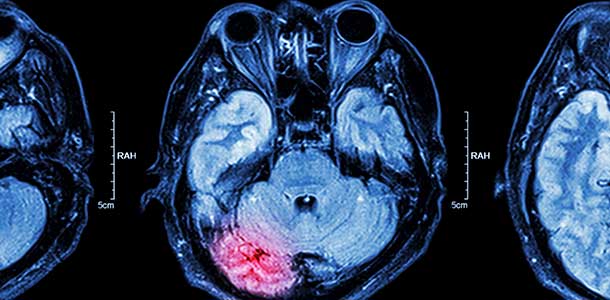Ischemic and Hemorrhagic Strokes
There are two kinds of stroke: ischemic and hemorrhagic. Ischemic strokes account for eighty percent of all strokes suffered. In ischemic stroke, a blood clot blocks a blood vessel in the brain. Some ischemic strokes are preceded by stroke-like symptoms called transient ischemic attacks (TIAs). Sometimes referred to as “mini-stroke” or “little stroke,” TIAs may occur months before a stroke. Symptoms last only a few minutes and usually have no lasting damage.
Hemorrhagic strokes occur when an artery inside the brain ruptures or when an aneurysm at the base of the brain bursts. Symptoms more specific to this type of stroke include headache, nausea and vomiting, neck stiffness, seizures, sudden changes in mental state and lethargy. Hemorrhagic strokes usually occur in the daytime and during physical activity. The symptoms typically begin very suddenly and evolve over several hours.
Stroke Treatments
For an Ischemic Stroke
If your stroke is diagnosed within three hours of the start of symptoms, you may be given a clot-dissolving medication called tissue plasminogen activator (t-PA), which can increase your chances of survival and recovery. However, if you experienced a hemorrhagic stroke, use of t-PA would be life-threatening.
If intravenous (IV) t-PA does not work, t-PA and other clot-dissolving agents can be delivered directly to the area of blockage with the angiogram technique and very small catheters. If these medications don’t work, the clot can potentially be removed with fine-grasping instruments or the blocked vessel can be re-opened with stents.
For a Hemorrhagic Stroke
Initial treatment of a hemorrhagic stroke can be difficult. Efforts are made to control bleeding, reduce pressure in the brain, and stabilize vital signs, especially blood pressure. There are few medications available to treat hemorrhagic stroke. Surgery generally is not used to control mild to moderate bleeding resulting from a hemorrhagic stroke. However, if a large amount of bleeding has occurred and the person is rapidly getting worse, surgery may be needed to remove the blood that has built up inside the brain and to lower pressure inside the head.
If bleeding is due to a ruptured aneurysm, the choice to perform surgery depends on the location of the aneurysm and the person’s condition following the stroke. Surgery can involve clipping the aneurysm in an open-brain procedure. Another option is neuro coiling to seal the aneurysm. This is a less invasive option, conducted through a cerebral angiography procedure, but is not yet suitable for all aneurysms.

